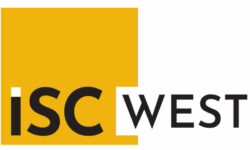Robotics Expert Explains the Future of Standards in the Industry
The Robotic Industries Association’s director of standards development discusses key trends affecting the industry’s tactics, trajectory and traction.

Founded in 1974, the Robotic Industries Association (RIA) is the only trade group in North America organized specifically to serve the robotics industry. Member companies include leading robot manufacturers, users, systems integrators, component suppliers, research groups and consulting firms.
According to RIA’s mission statement, the organization’s objective is to “drive innovation, growth and safety in manufacturing and service industries through education, promotion and advancement of robotics, related automation technologies and companies delivering integrated solutions.”
One of RIA’s most active participants is Carole Franklin, who serves as the director of standards development, including activities to advance ANSI and ISO Robot Safety Standards. Before joining RIA, she spent more than four years with the management consulting firm Booz Allen Hamilton, and her background also includes 10 years in the Ford Motor Co. market research department.
The University of Michigan MBA degree-holder is keenly adept at translating the needs of end users into actionable guidance for engineers and leaders ― and vice versa.
SSI Editor-in-Chief Scott Goldfine spoke with Franklin for RoboFYI, the official newsletter of the Robolliance, to get her perspective on current trends in robotics as well as an update of where industry standards are heading and why.
What role do you and your organization play in robotics standards, and why is it so important?
Carole Franklin: Voluntary standards are important and beneficial to their industries. The more widespread the use of the standard, the bigger the potential market for goods or services that comply with that standard. In other words, standards help create and stabilize markets. RIA plays a leading role in the development of standards in the industrial robotics world. We provide leadership, coordination, and administration of robotic standards development efforts in both ANSI and ISO. We also provide communication and education that promotes awareness and use of the standard and related documents.
Our current standard is the ANSI/RIA R15.06-2012, Safety Requirements for Industrial Robots and Robot Systems [R15.06]. We developed this standard because ensuring the safety of people working near industrial robots is a foundational requirement for success of the robotics industry. We are also working on a new, related standard for safety of industrial mobile robot systems.
RIA led the development of the first version of this standard in the 1980s. Since then, we have ensured its periodic updating as technology advances; and we also successfully promoted its adoption by ISO. The current R15.06 is a U.S. National Adoption of ISO 10218:2011, which is itself an adaptation and update of the 1999 version of R15.06.
Although we started our standards development efforts decades ago in the U.S., since then it became clear that our industry has a global reach, with multinational robotics suppliers and customers. As a result, RIA adopted a philosophy that says, “Do the standards development work in the international sphere first, then bring it back as a U.S. national adoption.” And so that’s what we’ve done for at least the past 10 years.
The first step in the standards process, then, is to work within the ISO Technical Committee 299, Robotics [TC 299]. Within TC 299, the Working Group [WG] responsible for industrial safety of robotic systems is WG 3, of which RIA has long served as an officer. It’s a great group of people dedicated to industrial safety, and they apply their considerable robotics expertise in the cause of worker safety.
What are a few of the most noteworthy robotics advances the past couple of years that are changing the game?
Franklin: Collaborative robotics is still a new technology and people are still working on how to use it most effectively. And the technology is still improving. Most “collaborative robot” solutions today are really what we call “power- and force-limited” [PFL] robots. They are limited in the size of payload they can handle and may also be limited in the forces they can exert, with the goal that they physically cannot hurt a human, should contact between human and robot occur.
But according to the ISO Technical Specification 15066-2016 [TS 15066], on the safety of collaborative robot systems, power- and force-limiting is only one of four possible modes of safe collaborative operation. There is also hand guiding, speed and separation monitoring, and safety-rated monitored stop. And a number of companies are working on sensor solutions that will enable effective speed and separation monitoring, going forward.
Another advance that will impact the robotics industry is the development of mobile robot systems. These are different from the traditional AGV [or automated guided vehicle] in the sense that mobile robots typically have a higher degree of autonomy. In other words, the mobile robot can enter a dynamic environment and make decisions “on the fly” about the path it will take to its goal, and what it will do when it gets there; whereas the AGV can only follow its predefined path no matter what is happening in its environment.
We are working on a new ANSI standard, R15.08, to set safety requirements for mobile robot systems in the industrial setting. In this document our goal is to provide guidance for areas currently not covered in existing industrial safety standards, primarily ANSI B56.5 on AGV safety, and our own R15.06 on industrial robot safety. Although the R15.06 does not preclude the existence of a mobile robot system, the R15.06 is primarily concerned with traditional industrial robots, where the robotic equipment is permanently mounted, and generally, safeguarded to keep humans out of its operating space. So, in R15.08, we are asking, what happens when the robot is mobile? How do we keep humans safe in that scenario?
The difference between R15.06, Industrial Robot Safety, and R15.08, Industrial Mobile Robot Safety, is just one little word, “mobile.” But we are finding that one little word opens up a whole world of complications. It’s a big challenge, but it’s important. And our committee members are dedicated to getting the job done.
In our R15.08 standard development committee, we are focusing first on mobile robotics within an “industrial environment,” broadly defined as manufacturing and adjacent economic sectors such as warehousing and delivery. In fact, the main defining characteristics of this operating environment are 1) a structured or semi-structured environment, as compared to an unstructured one, and 2) the system is working around people who can be broadly classed as having some kind of “employment” relationship with the facility.
That might be contractor or supplier, of course, not only employees strictly speaking; but the point is that it is controlled access, not public access. The people who interact with the system can be expected to be of working age and health (that is not a child or frail elderly), and to receive training in how to interact with the system safely.
This is not to say that someone implementing a mobile robot system in a situation where public access is permitted could not use the standard; but that they would need to take additional precautions to keep untrained and possibly nonworking-age people safe around the mobile robot system. So we would expect that, for example, a system of mobile security bots patrolling a closed campus at night, or whenever the public is expected to be absent, would find much useful guidance in the standard. And we certainly welcome participation by any security companies, who may be interested in helping with this effort. So if any of your readers would like to join our committee, feel free to contact me.
What are the three leading challenges facing robotics today and how are solutions being addressed?
Franklin: One growing challenge we’re monitoring carefully is cybersecurity. In the past, cybersecurity in the industrial setting has been nearly a non-issue because the robot and its controller were not connected to the outside world in any meaningful way. Essentially, someone had to be physically on the plant floor to make a change in this machine’s programming. Now that’s changing.
There’s been a push to connect these machines to the internet; the Industrial Internet of Things is coming. In the future, a robotic technician might be able to adjust his machine from his own couch, using his smartphone as the interface. But before we go connecting everything, and making that smartphone-interface possible, we need to take a very close look at how to protect that system from malicious code.
With mobile robot systems, this is going to be even more important. Will those mobile robots communicate with each other and their fleet manager by Wi-Fi? If so, will that Wi-Fi coverage extend beyond the facility wall at any point? And how can we prevent those Wi-Fi signals from being hacked?
Fortunately, there are decades of experience in cybersecurity in the software and financial services industries; there are ISO and ANSI standards on this topic, one of which is currently being updated. And we in the robotics industry can learn from these folks. We’re actually going to have a couple of speakers on a panel about cybersecurity at our upcoming National Robot Safety Conference [Oct. 10-12, 2017, in Pittsburgh].
What types of organizations belong to RIA and what value do they get out of it? What are some of RIA’s leading initiatives at present?
Franklin: We have a wide range of members, including robotics manufacturers and integrators, suppliers to the robotics industry, robotics and automation users, government and academic research organizations, and consultants. Members gain access to members-only discounts on our documents and events, and certain levels of membership receive two free table-top exhibits per year at events of their choice.
We also hold a members-only networking event in January each year, the A3 Member Forum. Forum is an outstanding opportunity to connect with colleagues and potential business partners from not just RIA, but also our sister organizations, Advancing Vision and Imaging [AIA] and Motion Control & Motor Association [MCMA].
We also serve as spokespeople for our industry, proactively reaching out to reporters and government to make the case for adoption of automation technologies. For example, we recently prepared a white paper showing that far from “taking jobs,” as is frequently and incorrectly stated, the adoption of automation actually creates and saves jobs by increasing productivity, which in turn grows the economy.
I recently toured a manufacturing facility that had installed an automation system that “replaced” ten specific jobs. But in that same factory, following the adoption of this machine, their productivity growth has enabled them to hire more than 100 additional people for new and different jobs. And this success story for automation — and the people who work with it — is repeated countless times.
Why should electronic security products manufacturers and systems integrators consider membership or attending RIA events?
Franklin: With some of our new technologies, such as those that enable collaborative and mobile robot systems, automation is poised to enter more and more aspects of our economy. The Internet of Things and the Industrial Internet of Things are on the horizon. We’re going to see a convergence of technologies, where things that used to seem very different are gaining more and more of the same capabilities, and you’re getting cross-over usage from one industry to another.
The things that might be considered “robots” in the future may look very different from what we’ve been used to thinking of as robots up until now. In the past, the permanently-mounted, large welding or painting robot arms you’d see in an auto factory really needed to be kept fenced away in order to keep people safe. And for some applications, and welding is one example, that will most likely continue to be the case for the foreseeable future; it’s hard to see how to make that safe for a human to work near it – though someone could find a way.
But now you also have the smaller, PFL robots and people are getting used to working in close proximity to them and still being safe. And going forward we clearly are going to see mobile units moving about among people, and that needs to be implemented in a safe way as well.
So, it’s important for the security industry to take a close look at the upcoming capabilities of automation and robotics, and ask, “How could we use this in our field?” The use of robots in general helps keep people safe, because we assign robots to tasks that are dangerous or dirty. So are there applications in the security field where it makes sense to place the robot in a situation that might be dangerous, while the human employee monitors the robot from a safe location? And RIA offers a lot of resources to help you understand the answers to these questions.
What are the top misperceptions about robotics?
Franklin: There are a couple of misperceptions, or myths, about robotics out in the public imagination. One is a fear of robots “taking our jobs,” which we at RIA believe is a misunderstanding that dates back to the original Industrial Revolution. The fact is, when you give a human a better tool, that human can produce more in a given span of time.
That adds value to the economy, as we show in the white paper I referenced. That added productivity grows the economy, which opens up new jobs — possibly better jobs in the sense of less tedious, less physically wearing, less dirty or dangerous.
It’s the old “buggy-whip-maker” conundrum. Isn’t it a shame we no longer employ as many buggy-whip makers as we did a century ago? The advent of the automobile “took away” those jobs. But we all recognize that this same new technology also enabled hundreds of thousands of people to be employed in auto production factories, probably at better wages.
And yes, fewer people are employed as blacksmiths and farriers; but instead, more people are employed as mechanics. That’s the “creative destruction” of the free economy; and most people would rather live today than 100 years ago — because of the overall benefits and technological progress that free economy and “creative destruction” has permitted us.
The same is true with robotics. When that “better tool” is a robot that frees up a human from the task of lifting, let’s say, a bumper for eight hours a day? That task is not using all of that person’s capabilities — it’s boring and might lead to repetitive stress injuries over time. So the robot frees up the person to do a better job, one that requires more creativity and problem-solving, which is what people are good at.
It’s also saving the person from the risk of repetitive-stress injury. At the same time it’s enabling the creation of even more jobs than before, to the benefit of still more people.
To read more articles about security robot standards and the organizations that govern them, check out the latest issue of RoboFYI, the Robolliance Newsletter.
For more information on the Robotic Industry Association (RIA), go to robotics.org.
If you enjoyed this article and want to receive more valuable industry content like this, click here to sign up for our FREE digital newsletters!

Security Is Our Business, Too
For professionals who recommend, buy and install all types of electronic security equipment, a free subscription to Commercial Integrator + Security Sales & Integration is like having a consultant on call. You’ll find an ideal balance of technology and business coverage, with installation tips and techniques for products and updates on how to add to your bottom line.
A FREE subscription to the top resource for security and integration industry will prove to be invaluable.









